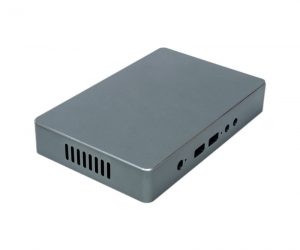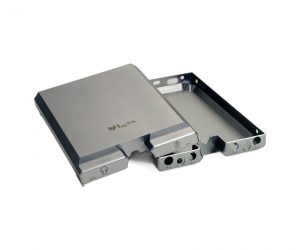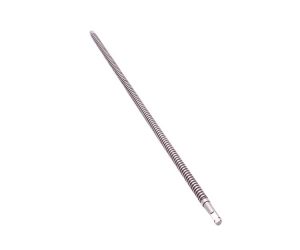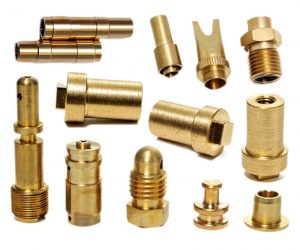1. Introduction: The Aerospace Industry’s Need for Speed and Innovation
The aerospace industry stands at the forefront of technological advancement, constantly pushing the boundaries of what is possible. It is an industry that demands nothing but the best in terms of precision, durability, and innovation. In the race to develop faster, more efficient, and safer aircraft and spacecraft, every improvement, no matter how small, can have a significant impact.
Traditionally, the aerospace manufacturing process has been complex, time - consuming, and costly. Design changes often required significant retooling and long lead times, which could delay projects and increase costs. For example, developing a new aircraft component using traditional methods could take months or even years. This involved creating detailed blueprints, building physical prototypes through machining or casting processes, and then conducting extensive testing. Each iteration of the design would require repeating these steps, leading to a slow and expensive development cycle.
However, rapid prototyping (RP) technology has emerged as a game - changer in the aerospace industry. RP, also known as additive manufacturing (AM) or 3D printing, is a revolutionary approach that allows engineers to create three - dimensional objects by adding layer upon layer of material based on a digital design. This technology has the potential to transform the way aerospace components are designed, developed, and produced.
By leveraging RP technology, engineers can now create complex aerospace components faster and more cost - effectively than ever before. The ability to quickly turn a digital design into a physical prototype means that design concepts can be tested and refined much earlier in the development process. This not only reduces the time it takes to bring a new product to market but also significantly cuts down on development costs.
RP technology bridges the gap between design and production, enabling a more seamless and efficient development process. It allows for greater design freedom, as engineers are no longer limited by the constraints of traditional manufacturing methods. Complex geometries that were once impossible or extremely difficult to produce can now be created with relative ease. This has opened up new possibilities for innovation in aircraft design, leading to more efficient aerodynamics, lighter weight structures, and improved performance.
In the following sections, Yigu Technology will explore in more detail how RP technology is being used in the aerospace industry, the benefits it offers, and the challenges it still faces. We will also look at some real - world examples of how this technology is revolutionizing the design and production of aerospace components.
2. The Technical Foundation of Rapid Prototyping in Aerospace
2.1 Key RP Technologies Transforming Aerospace
Rapid prototyping in aerospace is underpinned by several key technologies, each with its unique process, suitable materials, and range of applications within the industry.
Selective Laser Sintering (SLS) is a prominent RP technology. In SLS, a laser sinters powdered materials, such as titanium y aluminum. Metals and composites are commonly used as the powdered materials. This technology is widely applied in manufacturing engine parts and lightweight brackets. Engine parts produced by SLS can achieve complex internal structures that enhance their performance. For Yigu Technology example, the internal cooling channels in engine turbine blades can be designed and fabricated with greater precision, improving heat dissipation efficiency. A study by a leading aerospace research institution found that SLS - produced engine parts can reduce fuel consumption by up to 10% due to their optimized internal structures.
Stereolithography (SLA) is another significant technology. Here, a UV laser cures liquid resin to create high - detail prototypes. Photopolymers are the main materials used in SLA. In the aerospace industry, SLA is used for creating aerodynamic models and custom tooling. Aerodynamic models produced by SLA can accurately represent the complex shapes of aircraft components, enabling more accurate wind tunnel testing. Custom tooling made with SLA can be designed specifically for a particular manufacturing process, improving production efficiency. For instance, a company developing a new unmanned aerial vehicle (UAV) used SLA - made custom tooling, which reduced the production time of a critical component by 30%.
Fused Deposition Modeling (FDM) extrudes melted thermoplastic filament. Materials like PLA, ABS, and carbon - fiber composites are used in FDM. This technology is suitable for manufacturing non - structural components and interior parts. For example, interior panels and ducting in an aircraft can be produced using FDM. These components can be customized to fit specific design requirements. A case study showed that an aircraft manufacturer used FDM to produce interior parts, reducing the weight of these parts by 20% compared to traditional manufacturing methods, while maintaining the required strength and functionality.
The following Yigu Technology table summarizes the key aspects of these RP technologies:
| Technology | Process | Materials | Aerospace Applications |
| Selective Laser Sintering (SLS) | Laser sinters powdered materials (e.g., titanium, aluminum). | Metals, composites | Engine parts, lightweight brackets. |
| Stereolithography (SLA) | UV laser cures liquid resin for high - detail prototypes. | Photopolymers | Aerodynamic models, custom tooling. |
| Fused Deposition Modeling (FDM) | Extrudes melted thermoplastic filament. | PLA, ABS, carbon - fiber composites | Non - structural components, interior parts. |
2.2 Material Advancements for Aerospace
The development of suitable materials is crucial for the successful application of rapid prototyping in aerospace.
Titanium alloys are highly favored in the aerospace industry for their high strength - to - weight ratio. This property makes them ideal for critical engine components. For example, in aero - engines, titanium alloy compressor blades can withstand high rotational speeds and temperatures while remaining lightweight. A comparison of traditional steel blades and titanium alloy blades in a particular engine model showed that the titanium alloy blades reduced the weight of the compressor section by 35%, leading to a 15% improvement in fuel efficiency.
Carbon - Fiber - Reinforced Polymers (CFRPs) are another significant material advancement. These polymers can reduce the weight of aerospace components by up to 40% while maintaining stiffness. CFRPs are used in various applications, such as aircraft wings and fuselage structures. A major aircraft manufacturer reported that by using CFRPs in the wing structure of a new aircraft model, they were able to increase the payload capacity by 20% due to the weight reduction, without sacrificing the structural integrity of the wing.
4. Applications Reshaping Aerospace Engineering
4.1 Engine and Propulsion Systems
The engine and propulsion systems are the heart of any aerospace vehicle, and the application of rapid prototyping technology in this area is having a profound impact.
GE Aviation has been at the forefront of using rapid prototyping in engine component manufacturing. Their fuel nozzles, which are critical components in jet engines, are now 3D - printed using Selective Laser Sintering (SLS) technology. This approach has led to a remarkable reduction in the part count by 90%. In traditional manufacturing, fuel nozzles were often made up of multiple components that needed to be assembled, which was a time - consuming and complex process. With SLS, these multiple parts can be integrated into a single, more complex - shaped component. This not only simplifies the manufacturing process but also reduces the number of potential failure points.
Moreover, the development time for these fuel nozzles has been cut by 50%. By quickly producing prototypes and iterating on the design, GE Aviation can bring new and improved fuel nozzle designs to market much faster. This rapid development cycle allows them to respond more effectively to the evolving demands of the aerospace market, such as the need for more fuel - efficient engines. For Yigu Technology instance, the new 3D - printed fuel nozzles have been shown to improve fuel atomization, leading to more efficient combustion and potentially reducing fuel consumption by up to 5% in some engine models.
SpaceX, a leading force in space exploration, has also revolutionized the production of rocket components through rapid prototyping. They use RP for manufacturing combustion chambers, which are some of the most challenging components to produce in a rocket engine. Traditionally, manufacturing a combustion chamber could take months. The complex shapes and high - performance requirements meant that multiple machining and casting processes were involved, along with extensive quality control checks.
However, with rapid prototyping, SpaceX has managed to cut the production time from months to days. This is a game - changer for the company, as it allows them to iterate on their rocket designs much faster. For example, when developing their Super Heavy booster, they were able to quickly produce and test different combustion chamber designs. This led to significant improvements in the engine's performance. The faster production time also means that they can respond more quickly to any design flaws or performance issues that arise during testing. In one case, after a test flight revealed a potential issue with the combustion chamber, SpaceX was able to produce a redesigned version within a week, thanks to their rapid prototyping capabilities. This agility has been crucial in their ambitious plans for space exploration, including the development of a reusable rocket system for interplanetary travel.
4.2 Lightweight Structures
Lightweight structures are essential in aerospace engineering as they directly contribute to improving fuel efficiency and overall performance. Rapid prototyping has enabled the creation of innovative lightweight structures that were previously difficult or impossible to achieve.
The Airbus A350 XWB is a prime example of how RP technology is being used to create lightweight structures. The aircraft features 3D - printed aluminum brackets. These brackets play a crucial role in supporting various components within the aircraft. By using 3D printing, Airbus has been able to optimize the design of these brackets, reducing their weight while maintaining the necessary strength. In fact, these 3D - printed brackets save up to 600kg per aircraft.
This significant weight reduction has a direct impact on the aircraft's fuel efficiency. Lighter aircraft require less fuel to operate, which not only reduces operating costs but also decreases the environmental impact. For long - haul flights, the fuel savings can be substantial. A study showed that for a typical long - haul flight of 10,000 kilometers, the A350 XWB with 3D - printed brackets consumes approximately 5% less fuel compared to a similar - sized aircraft without such lightweight components. This not only benefits the airline in terms of cost savings but also aligns with the industry's growing focus on sustainability.
In the realm of drones, rapid prototyping has also made a significant impact. Drone frames made from carbon - fiber composites printed via Fused Deposition Modeling (FDM) offer enhanced maneuverability. Carbon - fiber composites are known for their high strength - to - weight ratio, and when combined with FDM technology, they allow for the creation of complex and lightweight drone frames.
These frames can be designed to be more aerodynamic, reducing drag and improving the drone's flight performance. For example, a racing drone with a 3D - printed carbon - fiber frame can achieve higher speeds and more precise maneuvers compared to a drone with a traditional frame. The lightweight nature of the frame also allows the drone to carry a larger payload or extend its flight time, as less energy is required to keep it airborne. A case study of a commercial drone used for aerial photography found that after switching to a 3D - printed carbon - fiber frame, the drone's flight time increased by 20%, enabling it to cover more areas during a single flight and capture more detailed images.
4.3 Tooling and Maintenance
Tooling and maintenance are crucial aspects of the aerospace industry, and rapid prototyping is providing innovative solutions in these areas as well.
Boeing has been using rapid prototyping to produce custom jigs. Jigs are essential tools in aircraft manufacturing, used to hold and position components during assembly. By using Selective Laser Sintering (SLS) to produce lightweight ABS jigs, Boeing has managed to reduce the weight of these tools by 50%. Lighter jigs are easier to handle and can be more quickly repositioned during the manufacturing process.
This not only improves the efficiency of the assembly line but also reduces the risk of operator fatigue and errors. For Yigu Technology example, in the production of a new aircraft model, the use of 3D - printed jigs allowed Boeing to reduce the assembly time of a particular wing section by 15%. The ability to quickly produce custom jigs also means that Boeing can respond more quickly to design changes. If a design modification requires a new jig, it can be designed and printed in a matter of days, compared to weeks or months using traditional manufacturing methods.
The U.S. Navy has taken rapid prototyping a step further by using portable metal printers for on - demand spare parts production during missions. In the past, if a critical component on a naval aircraft or ship failed during a mission, the vessel would often have to return to port to obtain a replacement part. This could disrupt operations and potentially put the mission at risk.
With portable metal printers, the U.S. Navy can now fabricate replacement parts on - site. For example, if a small engine component fails on a patrol aircraft, the Navy can use the portable printer to produce a replacement part within hours. This significantly reduces the downtime of the aircraft and ensures that the mission can continue. The use of 3D - printed spare parts also reduces the need to carry a large inventory of spare components, saving space and weight on naval vessels. A report by the U.S. Navy showed that since implementing portable metal printers, the average downtime of their aircraft due to component failures has been reduced by 70%, leading to more efficient mission operations.
7. Conclusion: The Future of Aerospace Is Rapid
Yigu Technology Rapid prototyping technology has firmly established itself as an indispensable force in the aerospace industry, marking a paradigm shift from traditional manufacturing approaches. Its influence is far - reaching, permeating every stage of aerospace product development, from the initial design concept to the final production and maintenance.
The most immediate and tangible benefit of RP is the drastic reduction in development time. In an industry where time is not only money but also a determinant of competitiveness, the ability to compress development cycles from years to months or even weeks is revolutionary. This acceleration allows aerospace companies to respond more nimbly to market demands, technological advancements, and regulatory changes. For example, in the race to develop more fuel - efficient aircraft engines, rapid prototyping enables quick iteration of design concepts, leading to faster innovation and the development of more efficient propulsion systems.
The design freedom offered by RP is another game - changing aspect. By breaking free from the constraints of traditional manufacturing methods, engineers can explore and implement complex geometries that were previously considered unfeasible. This has led to the creation of lighter, stronger, and more aerodynamic components. In aircraft wings, for instance, the use of RP - enabled lattice structures has reduced weight while maintaining or even enhancing structural integrity, resulting in improved fuel efficiency and performance.
FAQ
1. How does RP compare to traditional manufacturing in cost and time?
RP reduces tooling costs and speeds up prototyping, making it ideal for low - volume, complex parts. While traditional methods suit mass production, RP excels in iterative design and customization. For example, producing a small batch of complex aerospace brackets through traditional casting and machining could cost around \(50,000 and take 8 - 10 weeks. With RP, the cost could be reduced to \)20,000, and the production time could be shortened to 2 - 3 weeks.
2. What materials are commonly used in aerospace RP?
Common materials include titanium, aluminum, carbon - fiber composites, and high - temperature resins. These ensure strength, lightweighting, and resistance to extreme conditions. Titanium alloys, for instance, have a strength - to - weight ratio that is 30% higher than that of traditional steel alloys used in some aerospace applications, making them highly suitable for critical components.
3. Are RP - made components safe for flight?
Yes. RP components undergo rigorous testing to meet FAA and EASA standards. Companies like GE and Airbus have successfully certified 3D - printed parts for commercial use. For example, GE's 3D - printed fuel nozzles have been flight - tested in multiple engine models and have shown consistent performance over thousands of flight hours, meeting all safety and performance requirements.





